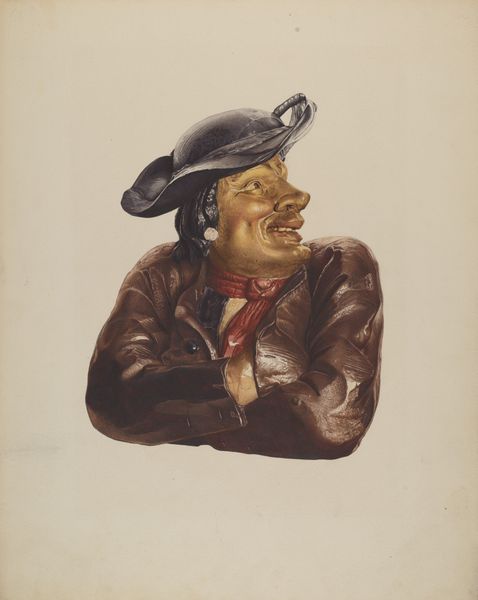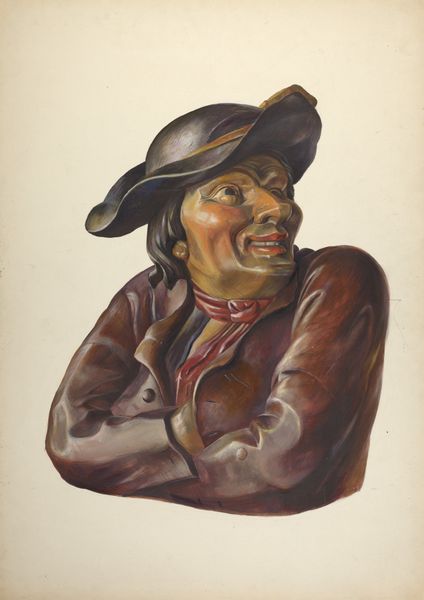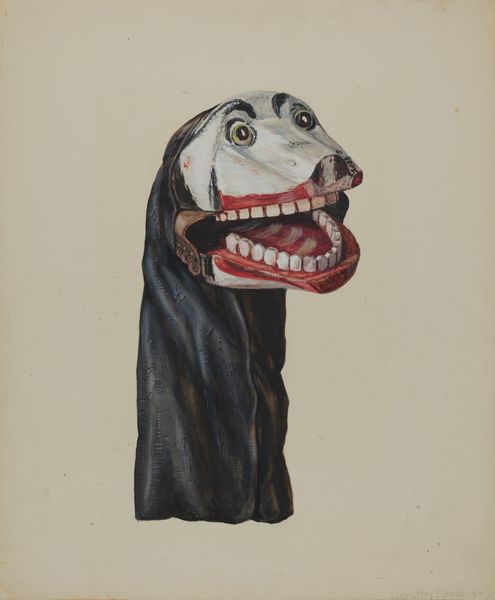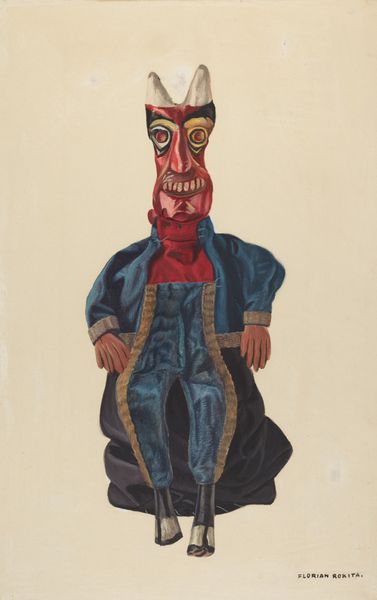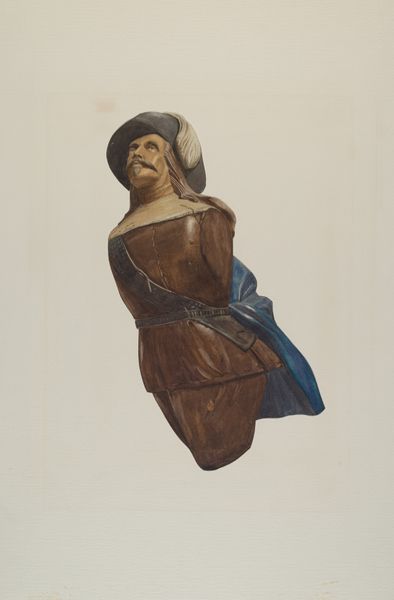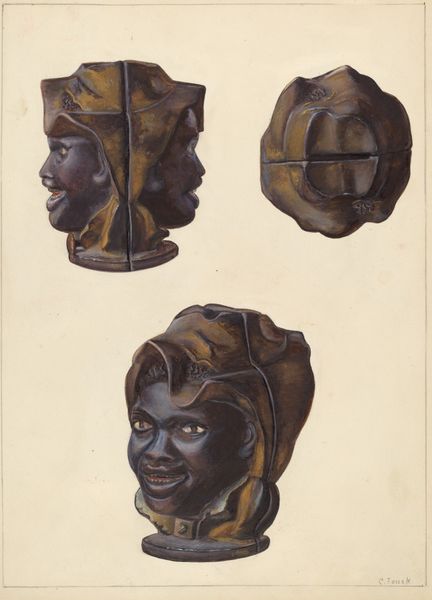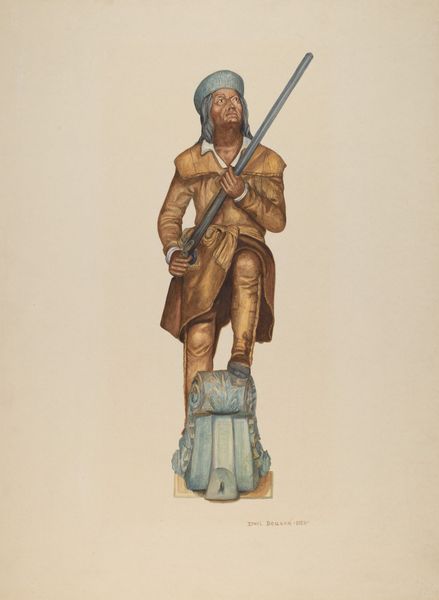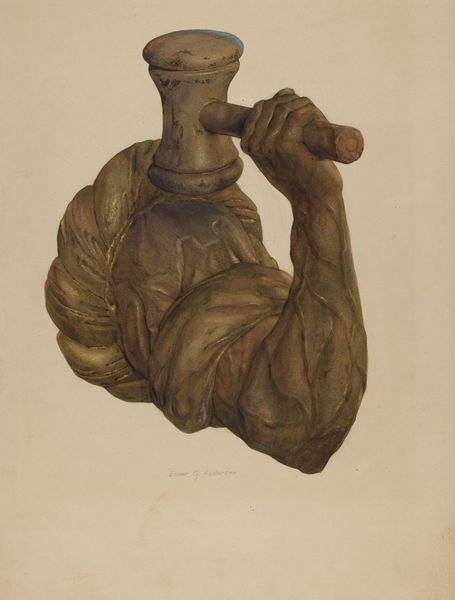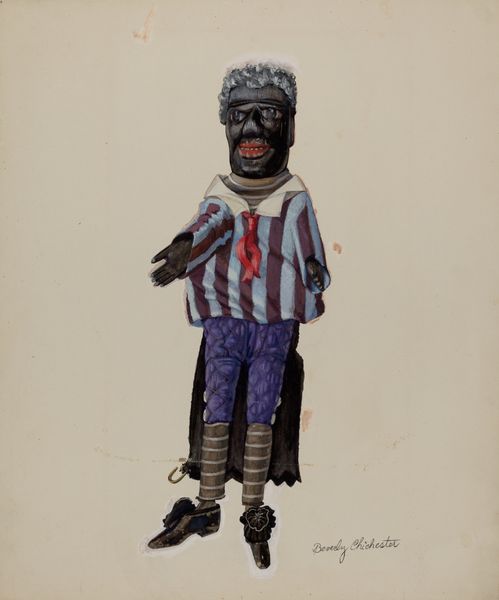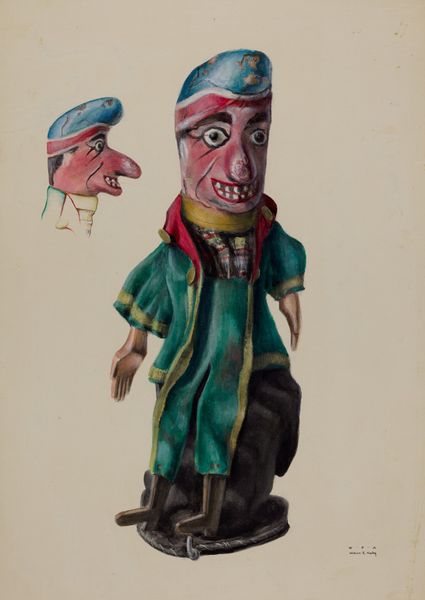
drawing, watercolor
#
portrait
#
drawing
#
figuration
#
watercolor
#
naïve-art
#
portrait drawing
#
facial portrait
#
portrait art
#
regionalism
#
erotic-art
Dimensions: overall: 29.7 x 21.5 cm (11 11/16 x 8 7/16 in.) Original IAD Object: 4 1/2" high
Copyright: National Gallery of Art: CC0 1.0
Editor: This is Walter Hochstrasser's "Toy Bank: Negro Boy Head," created around 1939 using watercolor. It's a very… interesting depiction. The style is somewhat naive, but it feels like it might carry more problematic implications related to the subject matter and historical context. What's your read on this piece? Curator: This watercolor drawing offers a powerful lens through which to examine the complicated history of representation and its socio-political ramifications. Hochstrasser's rendering of this toy bank confronts us with questions about how racist imagery was normalized through everyday objects. The smile, the cap—how do those stylistic choices strike you in relation to the history of minstrelsy? Editor: Knowing that context definitely casts the image in a darker light. The overly-exaggerated features become even more troubling when I consider how minstrel shows perpetuated harmful stereotypes. It makes me wonder about Hochstrasser's intentions… were they aware of the potential harm? Curator: That’s the crucial question. Consider the Regionalist movement of the time. Were artists like Hochstrasser simply reflecting the visual culture around them, or were they actively critiquing it? Furthermore, how did institutions exhibit works like this and what sort of public discourse did it encourage, or discourage? What effect would its presence, in say, a museum today have on audiences? Editor: It's tough to say for certain about intentions. It’s something that I have to keep researching on my own. It's disheartening to see how pervasive these stereotypes were and how subtly they could be presented. Curator: Precisely. And acknowledging this history allows us to have more meaningful conversations about representation and cultural sensitivity in the art world and society at large. This single piece can be a potent entry point for crucial discussions on social justice and responsible curation.
Comments
No comments
Be the first to comment and join the conversation on the ultimate creative platform.



